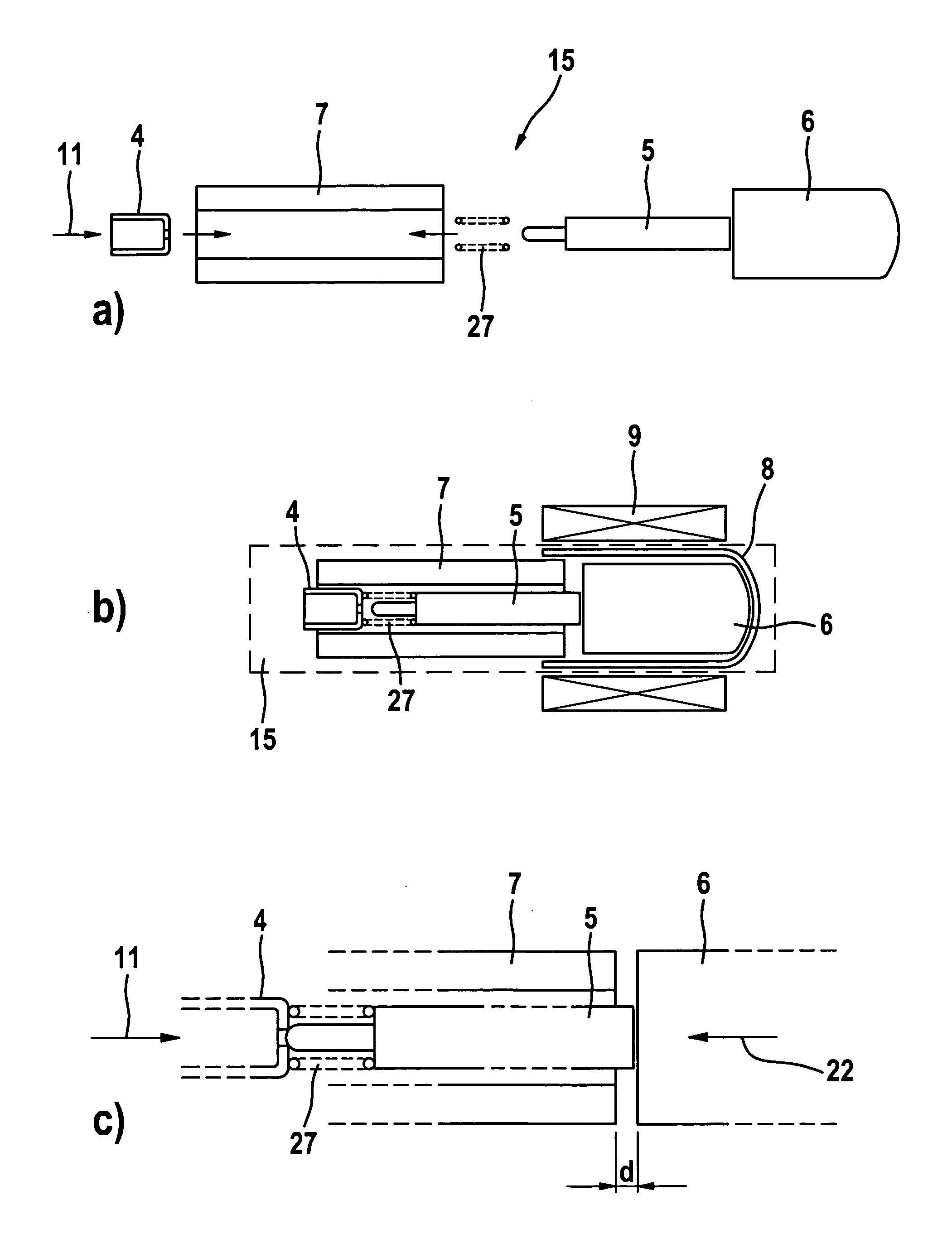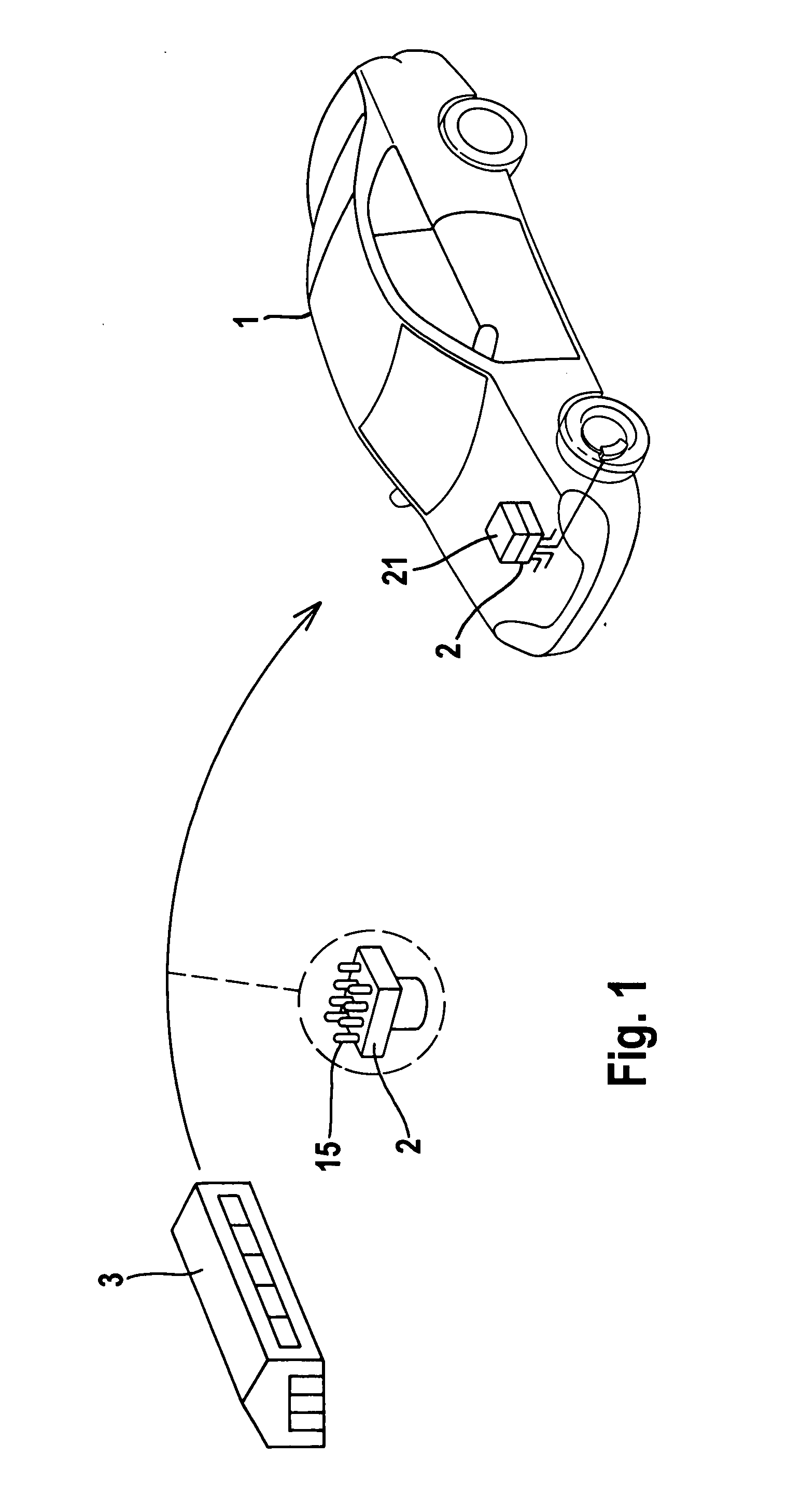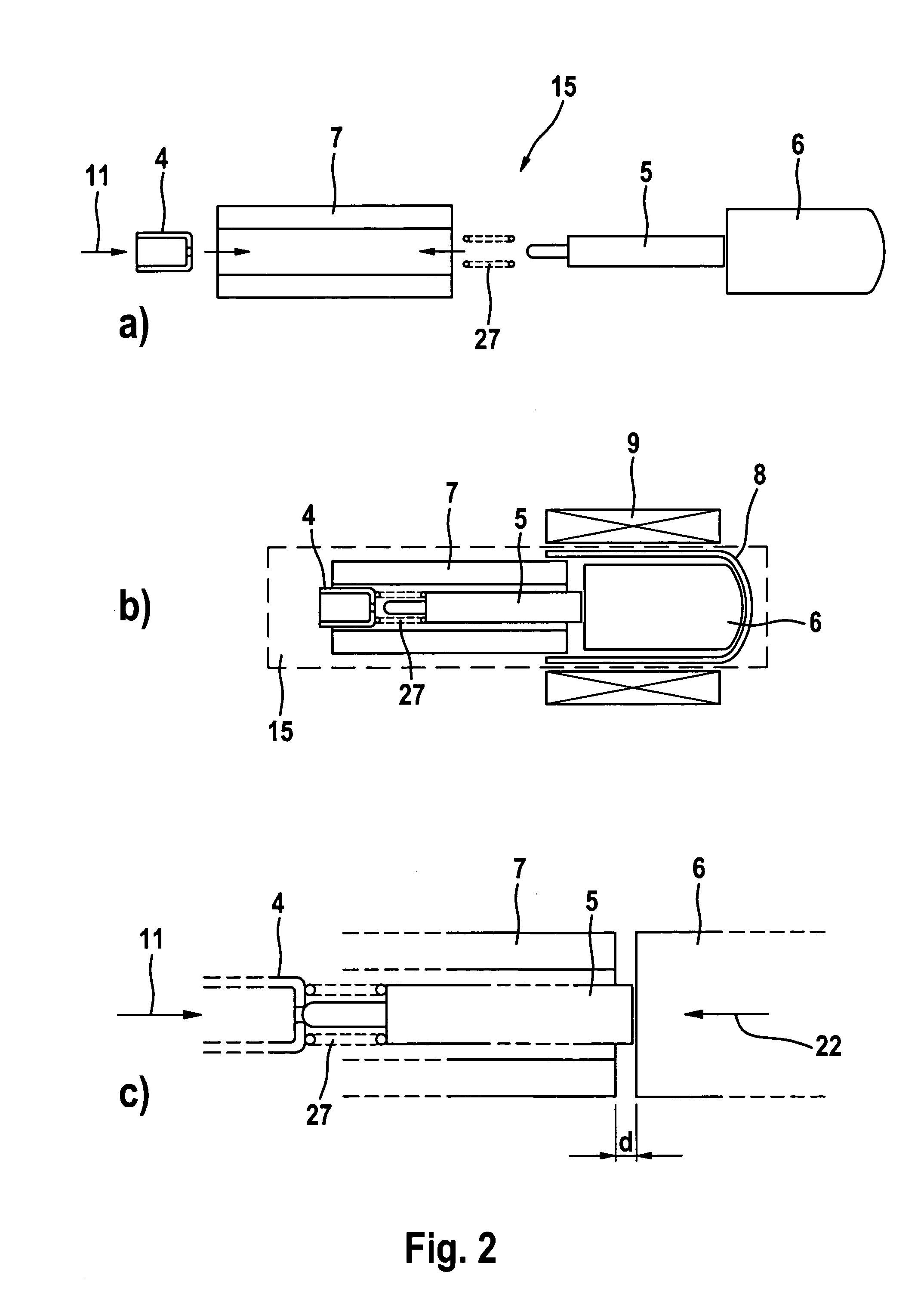Method and device for producing and/or adjusting and electromagnetically controllable actuator
- Summary
- Abstract
- Description
- Claims
- Application Information
AI Technical Summary
Benefits of technology
Problems solved by technology
Method used
Image
Examples
Example
DETAILED DESCRIPTION OF THE DRAWINGS
[0051]FIG. 1 explains the manufacturing process of a solenoid valve 15 for an electrohydraulic brake system 2 in a motor vehicle 1 with an ABS / ESP function. Initially, the solenoid valves are mechanically adjusted at manufacturing plant 3 after their manufacture according to the method of the invention in terms of a uniform opening current behavior, and they are then mounted into brake control unit 2. Due to residual tolerances, either existing or appearing in the course of time, it is possible, if a particularly high rate of precision in brake control is desired, to additionally carry out the subsequently described calibration process in the motor vehicle by way of the electronic controller 21, after the brake control unit 2 has been mounted into motor vehicle 1.
[0052]FIG. 2 shows a greatly schematic view of the design of a typical solenoid valve 15. Armature 6, housing 7, sleeve 8, and coil 9 are component parts of the electromagnetic arrangem...
PUM
 Login to View More
Login to View More Abstract
Description
Claims
Application Information
 Login to View More
Login to View More - R&D
- Intellectual Property
- Life Sciences
- Materials
- Tech Scout
- Unparalleled Data Quality
- Higher Quality Content
- 60% Fewer Hallucinations
Browse by: Latest US Patents, China's latest patents, Technical Efficacy Thesaurus, Application Domain, Technology Topic, Popular Technical Reports.
© 2025 PatSnap. All rights reserved.Legal|Privacy policy|Modern Slavery Act Transparency Statement|Sitemap|About US| Contact US: help@patsnap.com



